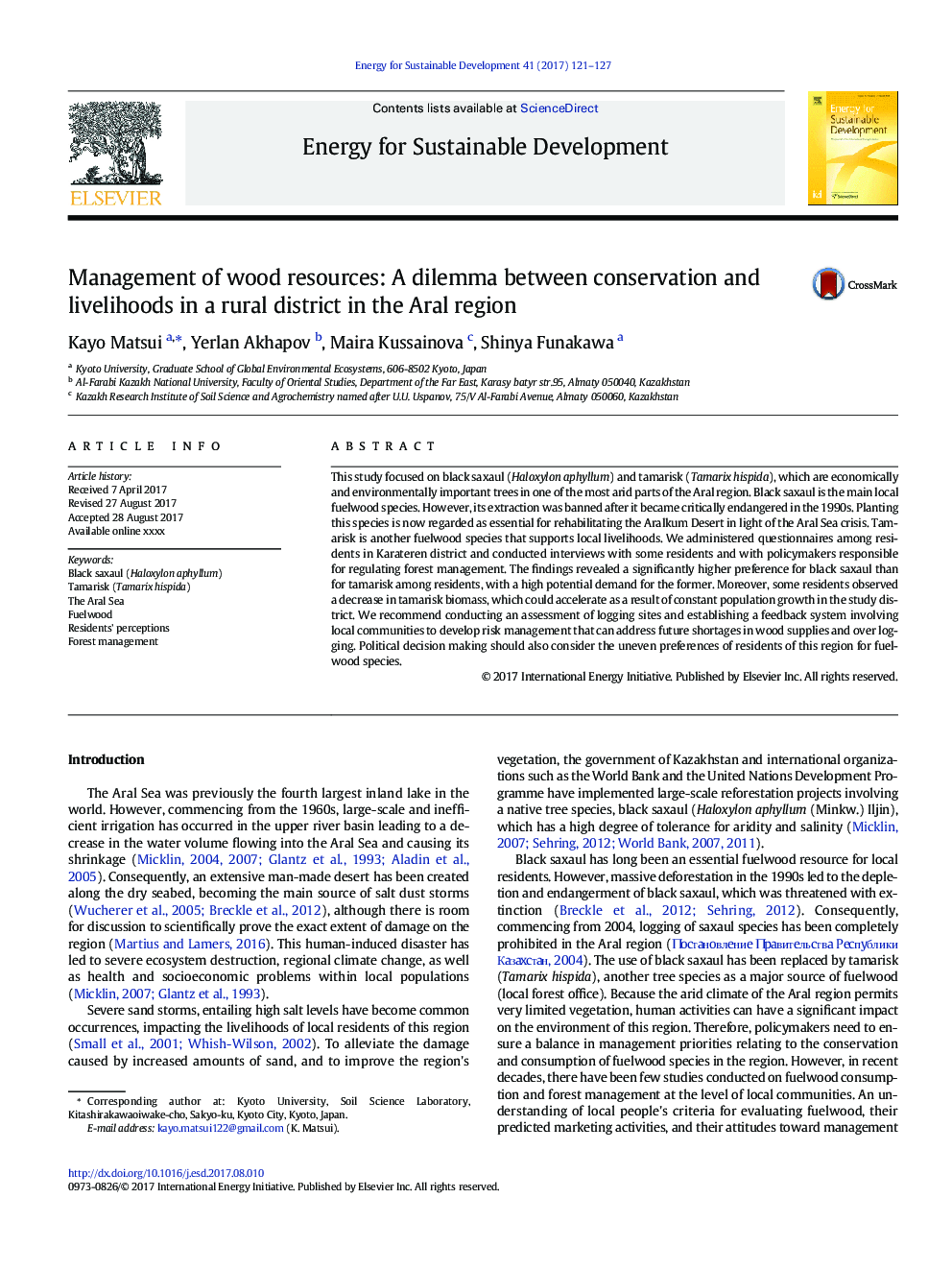| Article ID | Journal | Published Year | Pages | File Type |
|---|---|---|---|---|
| 5114305 | Energy for Sustainable Development | 2017 | 7 Pages |
Abstract
This study focused on black saxaul (Haloxylon aphyllum) and tamarisk (Tamarix hispida), which are economically and environmentally important trees in one of the most arid parts of the Aral region. Black saxaul is the main local fuelwood species. However, its extraction was banned after it became critically endangered in the 1990s. Planting this species is now regarded as essential for rehabilitating the Aralkum Desert in light of the Aral Sea crisis. Tamarisk is another fuelwood species that supports local livelihoods. We administered questionnaires among residents in Karateren district and conducted interviews with some residents and with policymakers responsible for regulating forest management. The findings revealed a significantly higher preference for black saxaul than for tamarisk among residents, with a high potential demand for the former. Moreover, some residents observed a decrease in tamarisk biomass, which could accelerate as a result of constant population growth in the study district. We recommend conducting an assessment of logging sites and establishing a feedback system involving local communities to develop risk management that can address future shortages in wood supplies and over logging. Political decision making should also consider the uneven preferences of residents of this region for fuelwood species.
Related Topics
Physical Sciences and Engineering
Energy
Energy (General)
Authors
Kayo Matsui, Yerlan Akhapov, Maira Kussainova, Shinya Funakawa,
